LAMBERTVILLE, NJ – The Delaware River Joint Toll Bridge Commission announced today that it will continue accepting public comment on recently issued New Hope-Lambertville Toll-Supported Bridge Rehabilitation Project materials until 4 p.m. June 30.
The comment deadline follows two public open houses the agency hosted at its New Hope maintenance facility on June 14 and the Lambertville Station Inn’s Riverside Ballroom on June 15.
At those sessions, the Commission released an array of new informational materials – including a fact sheet and more than a dozen informational boards outlining and describing aspects of the envisioned 2024 project. These materials have been added to the webpage the Commission established for the project in March. Go to: http://www.drjtbc.org/project/newhopelambertville.
Individuals who were unable to attend the open house events can now review the materials and other project webpage content. Online comment can be made through the Commission website’s contact portal — http://www.drjtbc.org/contact/– or by sending an email to CommunityAffairs@drjtbc.org.
After the comment period ends on June 30, project planning will enter final design.
The newly uploaded materials include general existing conditions, planned major project tasks, an updated project schedule, anticipated travel restrictions, an eastbound traffic detour, the sequencing of work stages, and information about a programmable LED lighting system that would highlight the bridge’s architectural profile along the river.
Besides the architectural lighting system, the bridge’s rehabilitation is expected to include the following major tasks:
- Removal of the current walkway panels and replacement with skid-resistant foam-core fiber-reinforced-polymer panels;
- Cleaning and repainting of the bridge’s steel-truss superstructure;
- Repair or replacement of various deteriorated or compromised steel components;
- Upgrade roadway and walkway lighting to an energy-efficient LED system;
- Replace electrical wiring and connections; and
- Update the bridge’s security camera system and install up to two additional walkway cameras.
Anticipated travel impacts in 2024 include a shutdown of the bridge walkway from early January to early-to-mid April; an uninterrupted closure to New Jersey-bound traffic from early January to late May; and weekday closures of the bridge’s New Jersey-bound travel lane from June through September. The project is expected to reach completion in fall 2024. (Note: The Commission cannot rule out that short-duration closures of the bridge’s two travel lanes might be necessary at some points during the rehabilitation.
The Commission is attempting to stage the project in a manner that would impact westbound (Pennsylvania-bound) vehicular travel across the bridge only as a last resort. (Tolls are collected in the Pennsylvania-bound direction at the next closest river crossing – the New Hope-Lambertville [Route 202] Toll Bridge – roughly one mile upstream. Class 1 passenger vehicle tolls at that bridge will be $1.50 for E-ZPass and $3 for cash transactions at that bridge in 2024. Toll rates are higher for larger vehicles.)
Eastbound (New Jersey-bound) motorists affected by project-related travel restrictions will have toll-free access in that direction across the nearby toll bridge. The recently released materials include a detour plan for such motorists.
The aging steel-truss bridge connecting the New Hope and Lambertville commercial centers was last rehabilitated in 2004.
In February, the Commission announced the procurement of an engineering consulting firm – GPI/Greenman Pederson, Inc. of Lebanon, N.J. – to design a planned rehabilitation of the bridge in 2024.
Engineers performed a detailed inspection of the structure to identify and confirm the various structural deficiencies to be addressed under the rehabilitation project.
The functionally obsolete bridge superstructure has a four-ton weight limit, a 10-foot height restriction, and a 15-MPH speed limit. It carried an average of 12,400 vehicles per day in 2022.
The bridge was constructed for the former New Hope Delaware Bridge Company in 1904, replacing a wooden covered bridge that was destroyed in the “Pumpkin Flood” of October 1903. The steel truss replacement bridge initially operated as a private tolled crossing for 15-1/2 years. The bridge has been publicly owned and operated as a non-tolled crossing since early 1920. The Commission has owned the bridge since July 1, 1987. The Commission uses a share of toll proceeds collected at its eight toll bridges to operate and maintain the bridge and 11 other aging “toll-supported” bridges along the river.
About the Commission
The Delaware River Joint Toll Bridge Commission was formed statutorily by the Commonwealth of Pennsylvania and the State of New Jersey in 1934 and Congress ratified the arrangement under the Compact Clause of U.S. Constitution in August 1935. The agency operates eight toll bridges and 12 toll-supported bridges, two of which are pedestrian-only spans. The Commission is a self-supporting public-service agency that receives neither federal nor state tax dollars to finance its projects or operations. Funding for the operations, maintenance and upkeep of its bridges and related transportation facilities is solely derived from revenues collected at its toll bridges. The Commission’s jurisdiction extends along the Delaware River from the Philadelphia-Bucks County line north to the New Jersey/New York border. More than 128.1 million cars and trucks crossed Commission bridges in 2022. For more information, please go to: www.drjtbc.org.
